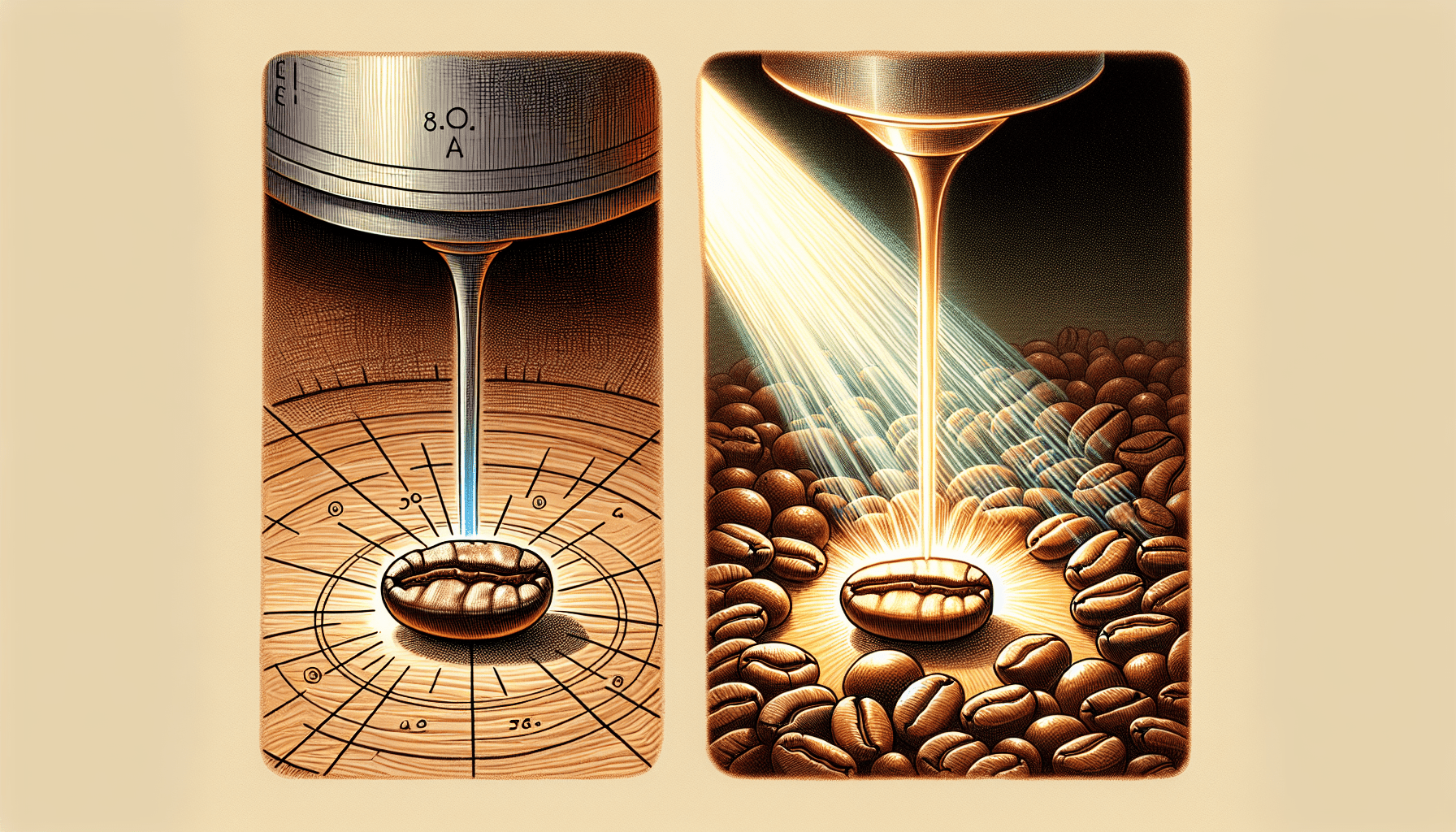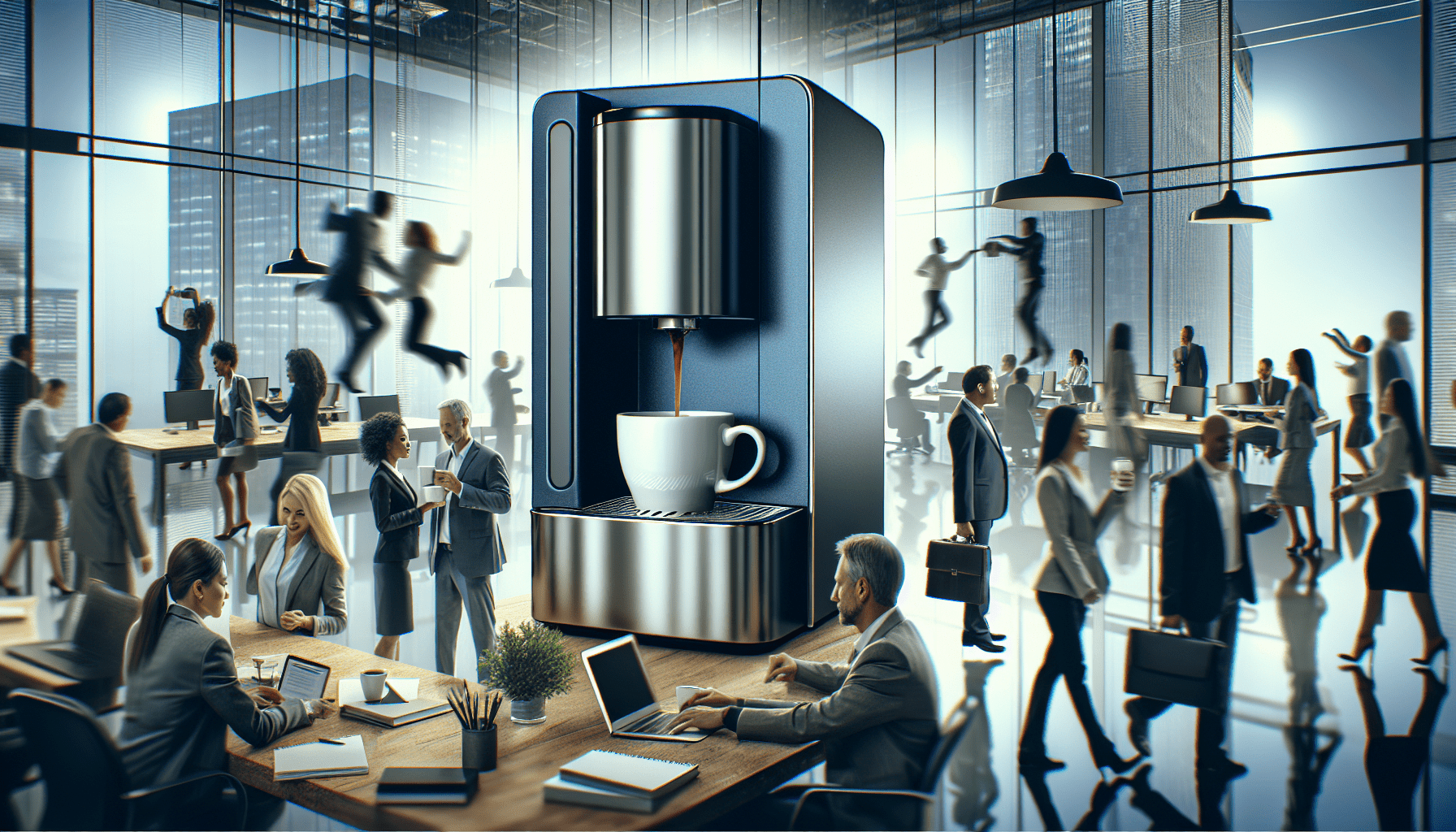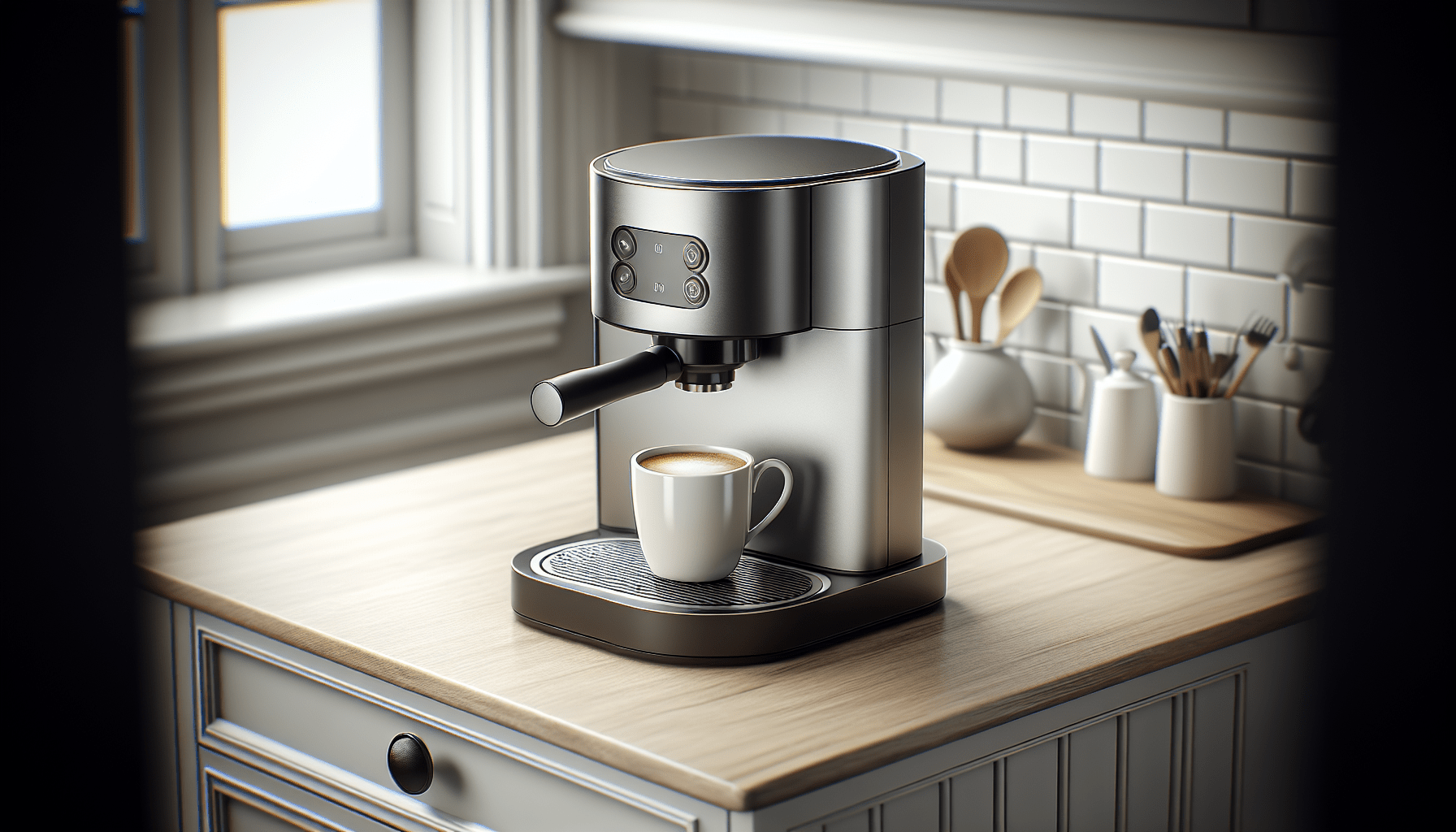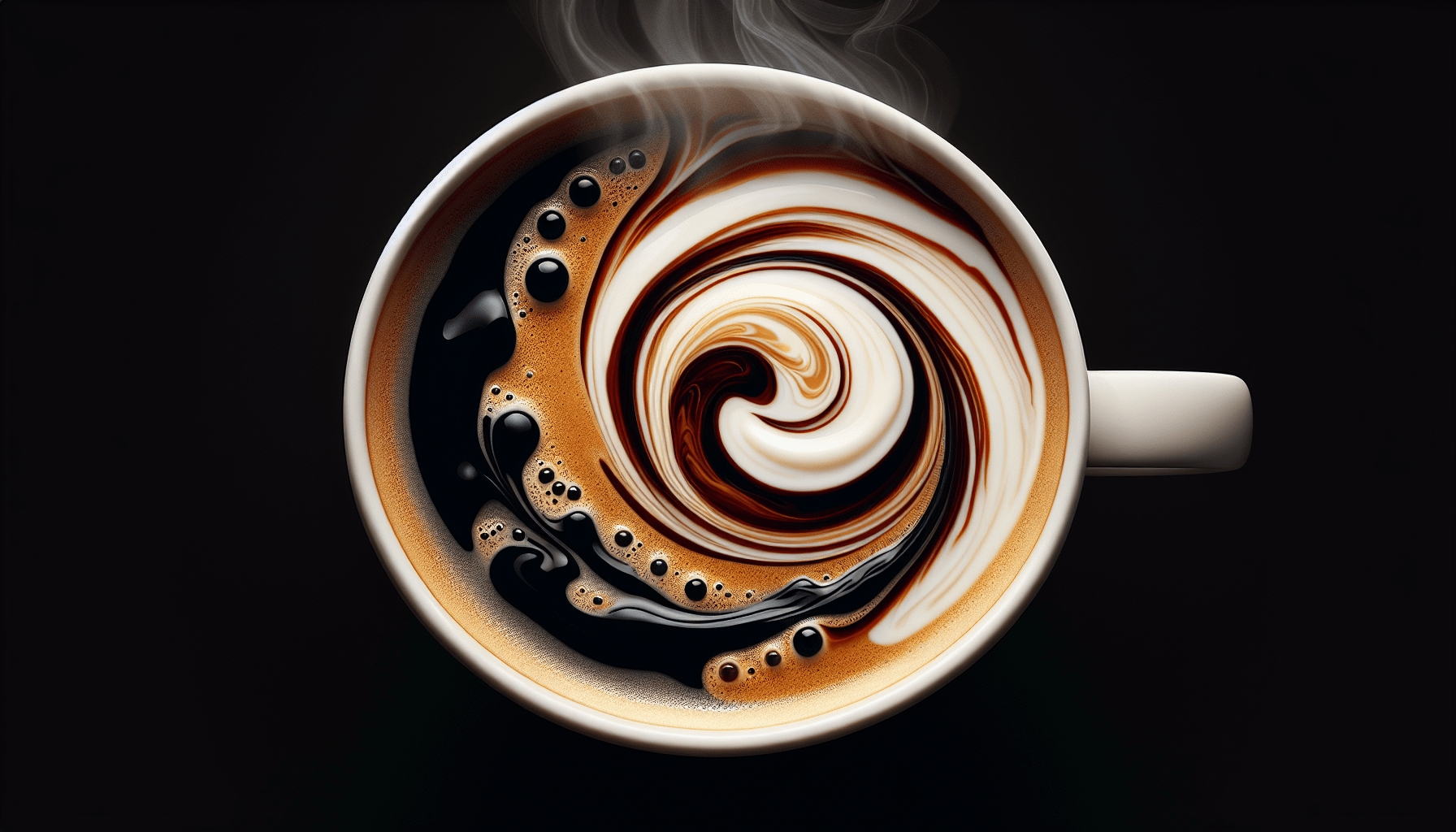You love the aroma of freshly brewed coffee in the morning, but there’s nothing worse than taking that first sip and being greeted by an unpleasant bitter taste. If you’ve ever wondered how to keep your coffee from turning bitter, worry no more. In this article, we’ll share some simple yet effective tips to ensure your cup of joe is smooth and satisfying every single time. Say goodbye to bitter disappointments and say hello to a truly delightful coffee experience.
Choosing the Right Coffee Beans
When it comes to brewing a delicious cup of coffee, choosing the right beans is essential. Opting for high-quality beans ensures that you’ll be starting with a solid foundation for your coffee. Look for beans that are fresh, as these will have the most flavor. Additionally, pay attention to the origin of the beans. Different countries produce coffee with distinct flavor profiles, so you may want to experiment with beans from different regions to find your preferred taste.
Selecting high-quality beans
To select high-quality beans, start by examining their appearance. Look for beans that have a glossy appearance and are free from any blemishes or defects. A uniform color is also a good indicator of quality. Next, give the beans a sniff. Take note of any pleasant aromas and avoid beans that have a stale or off-putting smell. Finally, make sure to purchase beans from reputable sources to ensure that they have been roasted and packaged properly.
Choosing beans with the right roast level
Another important aspect of choosing the right coffee beans is selecting the appropriate roast level. The roast level can significantly impact the taste of your coffee. Lighter roasts tend to have more acidity and brightness, while darker roasts have a richer and more robust flavor. Different preferences vary, so it’s important to experiment and find the roast level that suits your personal taste. Keep in mind that lighter roasts retain more of the original characteristics of the beans, while darker roasts tend to have more roasted flavors.
Considering the country of origin
The country of origin can play a substantial role in the flavor profile of your coffee. Coffee beans are grown in various regions around the world, each producing coffees with distinct tastes and characteristics. For example, Central American beans often have a bright and fruity flavor, while African beans are known for their floral and wine-like notes. South American beans tend to have a well-balanced and nutty flavor. Exploring coffee from different countries can be a delightful journey in discovering your favorite flavor profiles.
Proper Coffee Bean Storage
Once you have selected the perfect coffee beans, the next step is to store them properly. Proper storage ensures that your beans stay fresh and flavorful for as long as possible.
Keeping your beans in an airtight container
To prevent your coffee beans from becoming stale, it’s crucial to store them in an airtight container. A container with a sealing mechanism helps to protect the beans from exposure to oxygen, which can quickly degrade the flavor. Look for a container that is specifically designed for storing coffee beans, and make sure it has a tight seal to maintain freshness.
Avoiding exposure to light and heat
Light and heat are also enemies of coffee bean freshness. When coffee beans are exposed to direct sunlight or high temperatures, their flavor and aroma can deteriorate rapidly. Therefore, it is best to store your coffee beans in a cool, dark place. Avoid placing them near any heat sources, such as stovetops or ovens. For even better protection, consider storing your airtight container of beans inside a cupboard or pantry.
Storing beans in a cool, dark place
To optimize the shelf life of your coffee beans, it’s important to store them in a cool environment. Aim for a temperature range of about 50 to 70 degrees Fahrenheit (10 to 21 degrees Celsius). Avoid storing your beans in the refrigerator, as the moisture and odors inside can impact the flavor. Instead, find a cool and dry cupboard or pantry that meets the temperature guidelines. By storing your coffee beans properly, you can ensure that each cup you brew is filled with the freshest and most vibrant flavors.
Grinding Your Coffee
The way you grind your coffee beans has a significant impact on the flavor of your brewed coffee. Grinding too early or using the wrong grinder can result in uneven extraction and a subpar cup of coffee.
Grinding just before brewing
For the best results, it’s recommended to grind your coffee just before brewing. Coffee beans contain volatile compounds that begin to dissipate once they are ground, leading to a loss of flavor. By grinding your beans right before brewing, you can ensure that you capture all the aromatic compounds and flavors, resulting in a more flavorful cup of coffee.
Using a burr grinder for consistent grind
When it comes to choosing a coffee grinder, a burr grinder is often the preferred option. Burr grinders offer a more consistent grind size compared to blade grinders. Consistency is crucial because different brewing methods require different grind sizes. A burr grinder allows you to adjust the grind size precisely, ensuring that you consistently achieve the desired extraction for your brewing method.
Adjusting grind size for your brewing method
Each brewing method requires a specific grind size to achieve the optimal flavor extraction. For example, a medium-fine grind is suitable for pour-over methods, while an espresso machine requires a fine grind. Experimenting with different grind sizes for your preferred brewing method is essential to find the balance that produces the best-tasting coffee. Play around with the settings on your burr grinder until you achieve the desired flavor in your brewed cup.
Water Quality
Water is a key ingredient in coffee, and its quality can greatly affect the taste of the final brew. By paying attention to the water you use, you can enhance the flavors and ensure a delicious cup of coffee.
Using filtered or bottled water
Using filtered or bottled water is generally recommended for brewing coffee. Tap water can contain impurities and minerals that may affect the taste. Filters can help remove any unwanted flavors and odors, resulting in cleaner-tasting coffee. Bottled water is also an alternative, but be sure to choose a brand that has a neutral taste and does not contain any additives.
Avoiding tap water with strong flavors
If you decide to use tap water, it’s important to be mindful of its taste. Some tap water has an overpowering flavor, which can mask the delicate flavors of your coffee. If your tap water has a strong taste, consider using a filter to remove any unwanted elements that may interfere with the coffee’s flavor profile.
Balancing mineral content for better taste
While it’s important to avoid tap water with strong flavors, water that is too pure can also negatively affect the taste of your coffee. A small amount of mineral content in the water can enhance the flavors and acidity of the coffee. If you’re using purified water, consider adding a tiny pinch of sea salt to your brewing water to help balance the flavors and achieve a more well-rounded cup of coffee.
Brewing Method
The brewing method you choose plays a significant role in the flavor and characteristics of your coffee. Different brewing methods produce distinct flavors, strengths, and aromas.
Choosing the right brewing method
There are various brewing methods available, each with its unique set of advantages and flavor profiles. Some popular options include pour-over, French press, espresso, and drip brewing machines. The choice of a brewing method largely depends on personal preference and the desired flavor experience. Experimenting with different methods allows you to explore the vast world of coffee and discover your favorite brewing techniques.
Avoiding over-extraction
Over-extraction occurs when the water spends too much time in contact with the coffee grounds during the brewing process. This can result in bitterness and astringency. To avoid over-extraction, it’s important to follow the recommended brewing times and adjust your grind size accordingly. Paying attention to the brewing process and fine-tuning your technique will help you achieve a well-balanced and flavorful cup of coffee.
Using the correct water-to-coffee ratio
The water-to-coffee ratio is another crucial element in brewing a great cup of coffee. Different brewing methods require different ratios to achieve the ideal strength and flavor. Generally, a ratio of 1:16 (1 part coffee to 16 parts water) is a good starting point. However, feel free to adjust this ratio to suit your personal taste preferences. Keep in mind that using too much coffee can result in a strong and overpowering brew, while using too little may produce a weak and watery cup.
Brewing Temperature
The temperature at which you brew your coffee can significantly impact its flavor and extraction. Finding the right temperature range is essential to achieving a well-balanced and tasty cup of joe.
Optimal temperature range for brewing
The optimal range for brewing coffee is typically between 195 to 205 degrees Fahrenheit (90 to 96 degrees Celsius). Within this temperature range, the water effectively extracts the flavors, oils, and aromas from the coffee grounds. Too hot of water can lead to over-extraction and bitterness, while water that is too cool may result in a weak and under-extracted brew. Investing in a thermometer or using a kettle with adjustable temperature settings can help you achieve the perfect brewing temperature consistently.
Avoiding very hot or boiling water
Boiling water is often too hot for brewing coffee and can result in an unpleasantly bitter taste. Extremely high temperatures can extract unwanted compounds from the coffee grounds, overpowering the desired flavors. It’s best to let the water cool for a minute or two after boiling before pouring it over your coffee grounds. This slight temperature adjustment can help avoid bitterness and ensure a more well-rounded and enjoyable cup of coffee.
Preheating your equipment
Preheating your brewing equipment is another important step in achieving the optimal brewing temperature. Cold equipment can lower the overall temperature of the brewing water, leading to under-extraction. To prevent this, rinse your equipment with hot water before brewing. Preheating your brewer and cups helps maintain the desired brewing temperature, allowing for a more consistent extraction and a flavorful cup of coffee.
Brewing Time
The brewing time refers to the duration that the water and coffee grounds are in contact during the brewing process. The brewing time can influence the strength, body, and flavor extraction of your coffee.
Following recommended brewing times
Different brewing methods come with specific recommended brewing times to achieve the best results. It’s essential to follow these guidelines to avoid over- or under-extraction. Overbrewing can lead to bitter and unpalatable coffee, while underbrewing may result in a weak and lacking flavor profile. Familiarize yourself with the recommended brewing times for your preferred method and adjust accordingly to suit your taste.
Avoiding overbrewing
Overbrewing occurs when the water and coffee grounds are in contact for too long, resulting in an overly extracted and bitter brew. To avoid overbrewing, follow the recommended brewing times for your specific brewing method. If you find that your coffee tastes too strong or bitter, try reducing the brewing time slightly in your next batch. This adjustment can help achieve a more balanced and enjoyable flavor profile.
Timing the extraction process
Timing the extraction process is crucial for achieving the desired balance of flavors in your coffee. During extraction, the water dissolves and extracts the compounds from the coffee grounds, creating the flavors and aromas in your cup. Using a timer or stopwatch can help you consistently achieve the desired extraction time. If your coffee tastes weak or lacking in flavor, you may need to extend the extraction time slightly. On the other hand, if your coffee tastes too strong or bitter, you might want to shorten the extraction time.
Cleaning Your Brewing Equipment
Properly cleaning your brewing equipment is essential for maintaining the quality of your coffee and ensuring that each cup tastes its best.
Regularly cleaning your coffee maker
Coffee makers are prone to buildup from coffee residues and oils, which can affect the flavor of your brew and potentially lead to mold or bacteria growth. It’s important to clean your coffee maker regularly, following the manufacturer’s instructions for cleaning and descaling. This maintenance routine helps remove any buildup and ensures that your coffee maker functions optimally, producing high-quality coffee every time.
Removing coffee residues and oils
Coffee residues and oils can accumulate on various brewing equipment, such as filters, screens, and carafes. These residues can impart unwanted flavors to your coffee over time. To prevent this, make sure to thoroughly clean all the removable parts after each use. Use warm water, mild soap, and a soft brush or sponge to gently remove any remaining coffee particles or oils. This simple cleaning routine will help maintain the cleanliness of your brewing equipment and keep your coffee tasting fresh.
Descale your equipment when necessary
Over time, minerals from water can build up inside your coffee maker, especially in areas exposed to hot water. This mineral buildup, known as scale or limescale, can affect the performance of your coffee maker and result in off-flavors. Depending on the hardness of your water, you may need to descale your equipment periodically. Follow the manufacturer’s instructions or use a commercial descaling solution to remove any scale buildup and keep your coffee maker in optimal condition.
Milk or Creamer
Milk or creamer can be a delightful addition to your coffee, providing a creamy texture and helping to balance any bitterness. However, it’s important to find the right amount and type to enhance the flavors without overpowering them.
Adding milk or creamer to balance bitterness
If you find that your coffee tastes bitter, adding milk or creamer can help mellow out the flavors and create a smoother cup. The proteins and fats in milk can bind to bitter compounds, reducing their intensity. Experiment with different amounts to find the perfect balance of bitterness and creaminess that suits your taste preferences.
Choosing the right amount
The amount of milk or creamer you add to your coffee is a personal preference. Start by adding a small amount and gradually increase until you achieve the desired taste and texture. Keep in mind that adding too much milk or creamer can overpower the coffee flavors, so it’s best to find a balance that allows the coffee to shine while adding the desired level of creaminess.
Experimenting with different types of milk
The type of milk you choose can also contribute to the overall flavor and texture of your coffee. Dairy milk, such as whole milk or half-and-half, adds a rich and creamy texture. Non-dairy alternatives, such as almond, oat, or soy milk, offer different flavor profiles and can provide a unique twist to your coffee. Experimenting with different types of milk allows you to personalize your coffee experience and discover new taste combinations.
Experimenting with Flavor Enhancements
If you’re feeling adventurous, there are several flavor enhancements you can try to elevate the taste of your coffee.
Adding a pinch of salt to reduce bitterness
Salt has long been used as a flavor enhancer and can help reduce bitterness in coffee. Adding just a pinch of salt to your coffee grounds before brewing can help neutralize any bitter notes and create a more balanced flavor profile. Be sure to start with a small amount and gradually increase if desired, as too much salt can overpower the coffee’s natural flavors.
Experimenting with flavorings like cinnamon or vanilla
Flavorings like cinnamon or vanilla can bring a delightful twist to your coffee. A dash of cinnamon added to your coffee grounds or a drop of vanilla extract to your brewed coffee can infuse warming and aromatic flavors. Feel free to explore different flavor combinations and find the ones that excite your taste buds.
Trying alternative sweeteners
If you prefer your coffee on the sweeter side, there are various alternative sweeteners to explore. Natural sweeteners like honey, maple syrup, or agave nectar can add a subtle sweetness without overpowering the coffee’s flavor. Stevia or monk fruit sweeteners offer a sugar-free option for those who are watching their sugar intake. Experiment with different sweeteners to find the one that complements your taste preferences and enhances your coffee experience.
- Conclusion: Enjoy Your Perfect Cup of Coffee
By following these tips and techniques for choosing the right coffee beans, proper storage, grinding, water quality, brewing method, temperature, brewing time, equipment cleaning, milk or creamer additions, and flavor enhancements, you will be well on your way to brewing your perfect cup of coffee. Remember, coffee brewing is a journey filled with exploration and personal preferences, so don’t be afraid to experiment and adjust to find the flavors that suit you best. With a little knowledge and a lot of love for coffee, you can enjoy a delicious and satisfying cup every time. Cheers to your coffee adventures!




